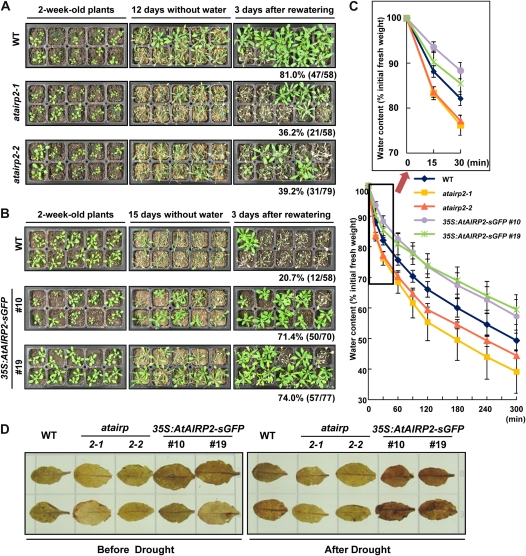Figure 6.
AtAIRP2 expression levels were closely associated with drought tolerance. A, atairp2 loss-of-function mutants were more sensitive to drought than were wild-type (WT) plants. Light-grown, 2-week-old wild-type and atairp2 mutant allele (atairp2-1 and atairp2-2) plants were further grown for 12 d under normal conditions but without irrigation. The water-stressed plants were irrigated, and their survival ratios were determined after 3 d of irrigation. B, Overexpression of AtAIRP2 conferred tolerance to drought stress. Light-grown, 2-week-old wild-type and 35S:AtAIRP2-sGFP (lines 10 and 19) plants were grown for 15 d without irrigation. Survival percentages were determined 3 d after irrigation. C, Water loss rates of detached rosette leaves. Mature rosette leaves from 2-week-old wild-type, atairp2 allele, and 35S:AtAIRP2-sGFP lines were detached, and their fresh weights were measured at the indicated time points. Water loss rates were calculated as the percentage of fresh weight of the excised leaves. Data represent means ± sd (n = 7) from eight independent experiments. D, H2O2 production in response to drought stress. Control and water-stressed rosette leaves from wild-type, atairp2-1, atairp2-2, and 35S:AtAIRP2-sGFP plants were stained with 100 μg mL−1 DAB overnight. Levels of drought-induced H2O2 production were visualized as a dark brown color. [See online article for color version of this figure.]

